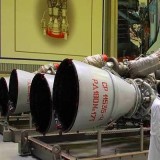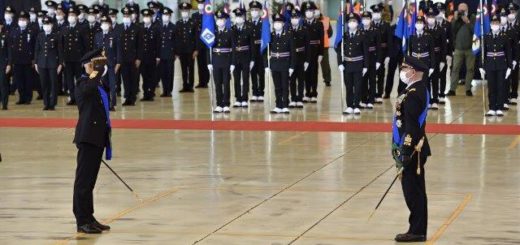Breaking News: British Typhoon fighter jets intercept Russian Il-20M spy aircraft near NATO airspace in Baltic

{loadposition bannertop}
{loadposition sidebarpub}
On April 20, 2025, the British Royal Air Force (RAF) announced that its Typhoon fighter jets deployed to Malbork Air Base in Poland had been scrambled three times over three days to intercept Russian military aircraft approaching NATO airspace. These operations are part of NATO’s Enhanced Air Policing (eAP) mission, a defensive measure designed to protect the airspace of alliance members in Eastern Europe. The RAF participates in this mission under Operation CHESSMAN, a key element of the United Kingdom’s commitment to NATO’s collective defense.Follow Army Recognition on Google News at this link
British RAF (Royal Air Force) Typhoon fighter jet intercepts Russian Ilyushin Il-20M near NATO airspace, a signals intelligence aircraft known by its NATO code name Coot-A. (Picture source: British Royal Air Force RAF)
The Malbork Air Base in Poland currently hosts six British RAF (Royal Air Force) Typhoon multirole combat aircraft and approximately 200 personnel from No. 140 Expeditionary Air Wing. These forces are tasked with rapid reaction duties to respond to unidentified or uncoordinated aerial movements near NATO borders. Their deployment is essential in maintaining airspace integrity and reassuring eastern member states amid Russia’s growing military activities. This rotation is particularly significant due to increased cooperation with Sweden, whose Gripen fighter aircraft are now operating alongside RAF Typhoons in a NATO mission for the first time, following Sweden’s accession to the Alliance in 2024.
The incidents began on April 15, 2025, when RAF Typhoons were scrambled twice. The first response was to intercept a Russian Ilyushin Il-20M—NATO reporting name “Coot-A”—departing from Kaliningrad airspace. Later that same day, RAF aircraft were deployed again to intercept two Russian Su-30MKI “Flanker-H” fighter jets also exiting Kaliningrad. On April 17, a third scramble was initiated to shadow another Il-20M aircraft approaching NATO-controlled airspace over the Baltic Sea. In all cases, the Russian aircraft were not in contact with civilian air traffic control, triggering a NATO air policing response to ensure flight safety and prevent airspace violations.
Kaliningrad, a Russian exclave bordered by NATO members Poland and Lithuania, remains one of the most strategically sensitive regions in Europe. It serves as a heavily fortified military hub hosting advanced missile systems, radar installations, and naval and air units. From this location, Russian aircraft and surveillance platforms can operate in proximity to NATO territory, allowing for regular intelligence-gathering missions and creating persistent security concerns for the Alliance.
One of the most concerning aspects of these recent interceptions is the repeated appearance of the Il-20M “Coot-A” signals intelligence aircraft. Designed for airborne communications intelligence (COMINT) and electronic intelligence (ELINT), the Il-20M is based on the Il-18 turboprop airliner platform but is equipped with a wide array of specialized sensors, side-looking airborne radar, and optical reconnaissance systems. It is capable of collecting detailed data on electronic emissions, radar frequencies, military communications, and even troop movements. Operating from just outside NATO borders, it can eavesdrop on military exercises, intercept encrypted data traffic, and gather information on command and control systems.
The threat posed by the Il-20M to NATO lies in its ability to undermine operational security by detecting, locating, and analyzing NATO defense infrastructure and response procedures. Its intelligence-gathering missions are often timed with NATO military exercises or periods of increased regional activity, allowing Russian forces to assess alliance readiness, strategic deployment patterns, and air defense coverage. Furthermore, the presence of such surveillance platforms near NATO airspace increases the risk of miscalculation or unintended escalation, particularly when operating without transponder signals or coordination with civilian air traffic control.
The RAF’s Typhoon fighter jets repeated interceptions of the Il-20M and Su-30MKI aircraft over the Baltic region underscore the continuing importance of NATO’s air policing mission. They serve as a clear reminder of the ongoing contest for situational awareness and strategic advantage in one of Europe’s most militarized and politically sensitive theaters.

{loadposition bannertop}
{loadposition sidebarpub}
On April 20, 2025, the British Royal Air Force (RAF) announced that its Typhoon fighter jets deployed to Malbork Air Base in Poland had been scrambled three times over three days to intercept Russian military aircraft approaching NATO airspace. These operations are part of NATO’s Enhanced Air Policing (eAP) mission, a defensive measure designed to protect the airspace of alliance members in Eastern Europe. The RAF participates in this mission under Operation CHESSMAN, a key element of the United Kingdom’s commitment to NATO’s collective defense.
Follow Army Recognition on Google News at this link
British RAF (Royal Air Force) Typhoon fighter jet intercepts Russian Ilyushin Il-20M near NATO airspace, a signals intelligence aircraft known by its NATO code name Coot-A. (Picture source: British Royal Air Force RAF)
The Malbork Air Base in Poland currently hosts six British RAF (Royal Air Force) Typhoon multirole combat aircraft and approximately 200 personnel from No. 140 Expeditionary Air Wing. These forces are tasked with rapid reaction duties to respond to unidentified or uncoordinated aerial movements near NATO borders. Their deployment is essential in maintaining airspace integrity and reassuring eastern member states amid Russia’s growing military activities. This rotation is particularly significant due to increased cooperation with Sweden, whose Gripen fighter aircraft are now operating alongside RAF Typhoons in a NATO mission for the first time, following Sweden’s accession to the Alliance in 2024.
The incidents began on April 15, 2025, when RAF Typhoons were scrambled twice. The first response was to intercept a Russian Ilyushin Il-20M—NATO reporting name “Coot-A”—departing from Kaliningrad airspace. Later that same day, RAF aircraft were deployed again to intercept two Russian Su-30MKI “Flanker-H” fighter jets also exiting Kaliningrad. On April 17, a third scramble was initiated to shadow another Il-20M aircraft approaching NATO-controlled airspace over the Baltic Sea. In all cases, the Russian aircraft were not in contact with civilian air traffic control, triggering a NATO air policing response to ensure flight safety and prevent airspace violations.
Kaliningrad, a Russian exclave bordered by NATO members Poland and Lithuania, remains one of the most strategically sensitive regions in Europe. It serves as a heavily fortified military hub hosting advanced missile systems, radar installations, and naval and air units. From this location, Russian aircraft and surveillance platforms can operate in proximity to NATO territory, allowing for regular intelligence-gathering missions and creating persistent security concerns for the Alliance.
One of the most concerning aspects of these recent interceptions is the repeated appearance of the Il-20M “Coot-A” signals intelligence aircraft. Designed for airborne communications intelligence (COMINT) and electronic intelligence (ELINT), the Il-20M is based on the Il-18 turboprop airliner platform but is equipped with a wide array of specialized sensors, side-looking airborne radar, and optical reconnaissance systems. It is capable of collecting detailed data on electronic emissions, radar frequencies, military communications, and even troop movements. Operating from just outside NATO borders, it can eavesdrop on military exercises, intercept encrypted data traffic, and gather information on command and control systems.
The threat posed by the Il-20M to NATO lies in its ability to undermine operational security by detecting, locating, and analyzing NATO defense infrastructure and response procedures. Its intelligence-gathering missions are often timed with NATO military exercises or periods of increased regional activity, allowing Russian forces to assess alliance readiness, strategic deployment patterns, and air defense coverage. Furthermore, the presence of such surveillance platforms near NATO airspace increases the risk of miscalculation or unintended escalation, particularly when operating without transponder signals or coordination with civilian air traffic control.
The RAF’s Typhoon fighter jets repeated interceptions of the Il-20M and Su-30MKI aircraft over the Baltic region underscore the continuing importance of NATO’s air policing mission. They serve as a clear reminder of the ongoing contest for situational awareness and strategic advantage in one of Europe’s most militarized and politically sensitive theaters.





